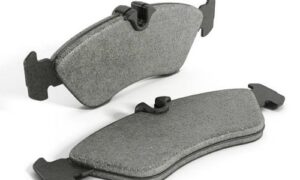Understanding tire speed ratings for tires is important for ensuring safety and performance on the road. Speed ratings indicate the maximum speed a tire can sustain under specified conditions. These ratings are essential for selecting the right tires for your vehicle. This article delves into the details of speed ratings for tires, explaining their importance, how to read them, and what they mean for your driving experience.
What Are Speed Ratings for Tires?
Tire speed ratings are standardized codes that specify the maximum speed a tire can handle before it no longer performs optimally. These ratings are designated by letters, each corresponding to a specific speed range. They help drivers choose tires that match their vehicle’s performance capabilities. For instance, a tire with a speed rating of “H” can handle speeds up to 130 mph, while a “T” rated tire is suitable for speeds up to 118 mph.
Why Are Speed Ratings Important for Tires?
Speed ratings are vital for maintaining the safety and performance of your vehicle. Tires not rated for your vehicle’s top speed can overheat, leading to blowouts or loss of control. Moreover, using the correct speed-rated tires can enhance your vehicle’s handling and stability, especially at high speeds. This ensures that your car performs as intended by the manufacturer, providing a smoother and safer driving experience.
How to Read Tire Speed Ratings
Reading tire speed ratings is straightforward once you know where to look. These ratings are usually found on the tire’s sidewall, following the tire size designation. For example, a tire marked as P225/50R17 94H includes the speed rating “H” at the end. Each letter corresponds to a specific speed limit, with common ratings including “S” (112 mph), “T” (118 mph), “H” (130 mph), and “V” (149 mph). Matching the speed rating to your vehicle’s requirements for optimal performance is essential.
Common Speed Ratings and Their Meanings
Q Rating (99 mph)
The “Q” rating indicates that the tire can handle speeds up to 99 mph. This rating is often found on winter tires, as these tires prioritize traction over-speed due to the challenging driving conditions they are designed for.
S Rating (112 mph)
An “S” rated tire can safely reach up to 112 mph speeds. This rating is common for family sedans and vans, which typically do not require high-speed performance but need reliable and safe tires for everyday driving.
T Rating (118 mph)
“T” rated tires are suitable for speeds up to 118 mph. These tires are often used on mainstream vehicles such as compact cars and midsize sedans. They offer a balance between performance, durability, and cost.
H Rating (130 mph)
The “H” rating is suitable for speeds up to 130 mph. This rating is commonly found on sportier vehicles that require better performance and handling at higher speeds. It provides enhanced stability and control for a more spirited driving experience.
V Rating (149 mph)
“V” rated tires can handle speeds up to 149 mph. These tires are designed for high-performance vehicles and offer excellent handling and stability. They are ideal for sports cars and luxury sedans that demand superior performance.
W Rating (168 mph) and Y Rating (186 mph)
“W” and “Y” rated tires are meant for ultra-high-performance vehicles. The “W” rating supports speeds up to 168 mph, while the “Y” rating is for speeds up to 186 mph. These tires are typically used on supercars and high-end sports cars, requiring the utmost speed and handling capabilities.
The Role of Speed Ratings in Tire Selection
When selecting tires, it’s crucial to consider the speed rating that matches your driving needs and vehicle specifications. Using tires with the correct speed rating ensures your vehicle can safely handle its top speed. For instance, if you drive a high-performance vehicle, opting for a lower-speed-rated tire can compromise your car’s handling and safety. Conversely, choosing a higher speed-rated tire for a vehicle that doesn’t require it can lead to unnecessary costs without tangible benefits.
How Speed Ratings Affect Tire Performance
Speed ratings indicate the maximum speed a tire can handle and reflect the tire’s overall performance characteristics. Higher-speed-rated tires typically offer better handling, traction, and stability, especially at high speeds. They are constructed with advanced materials and design techniques to withstand the stresses of high-speed driving. However, these tires may wear out faster and provide a stiffer ride than lower-speed-rated tires. Therefore, balancing performance needs with comfort and durability is important when choosing tires.
The Impact of Driving Conditions on Speed Ratings
Different driving conditions can affect how speed-rated tires perform. For instance, winter tires with a lower speed rating are designed to provide maximum traction in snow and ice, which is more critical than high-speed performance in such conditions. On the other hand, summer tires with higher speed ratings are engineered for optimal performance in dry and wet conditions, offering superior handling and grip. Choosing tires that are appropriate for the season and driving conditions you encounter most frequently is essential.
Legal and Safety Considerations
Using tires with the correct speed rating is not just a recommendation but a legal requirement in many regions. Driving with tires not rated for your vehicle’s speed can result in fines and penalties. More importantly, it poses significant safety risks. Tires not designed for your vehicle’s speed capabilities can fail, leading to accidents. Always ensure your tires meet or exceed the speed rating specified by your vehicle manufacturer.
How to Maintain Speed-Rated Tires
Maintaining speed-rated tires involves regular checks and proper care. Ensure that your tires are inflated to the manufacturer’s recommended pressure, as underinflation or overinflation can affect performance and safety. Regularly inspect your tires for signs of wear, damage, or irregularities. Rotate your tires as recommended to promote even wear and extend their lifespan. Additionally, balance and align your wheels periodically to ensure smooth and safe driving. Proper maintenance helps keep your speed-rated tires in optimal condition, ensuring they perform as intended.
Upgrading to Higher Speed Ratings
Upgrading to tires with a higher speed rating can enhance your vehicle’s performance, but it’s important to understand the implications. Higher speed-rated tires offer better handling and stability, which can improve your driving experience, especially if you enjoy spirited driving. However, they may also result in a firmer ride and increased tire wear. Before upgrading, consult a tire specialist to ensure the new tires are compatible with your vehicle and driving needs.
End of Speed Ratings for Tires
Speed ratings for tires are a critical aspect of vehicle performance and safety. By understanding these ratings, you can make informed decisions when selecting tires for your vehicle. Always choose tires that match your vehicle’s specifications and your driving habits. Properly rated tires enhance your driving experience and ensure your safety on the road. Remember to maintain your tires regularly to keep them in top condition. Whether you drive a family sedan, a sporty coupe, or a high-performance car, the right tires with the appropriate speed rating will provide you with the performance and safety you need.
While understanding speed ratings is essential for safe driving, ensuring your car’s overall health is equally important. For chipped or cracked windshields, visit Phoenix Windshield Repairs for expert repairs prioritizing safety and clarity on the road. Their certified technicians can get you back on the road quickly and securely, allowing you to focus on enjoying the drive within your tires’ speed rating.






